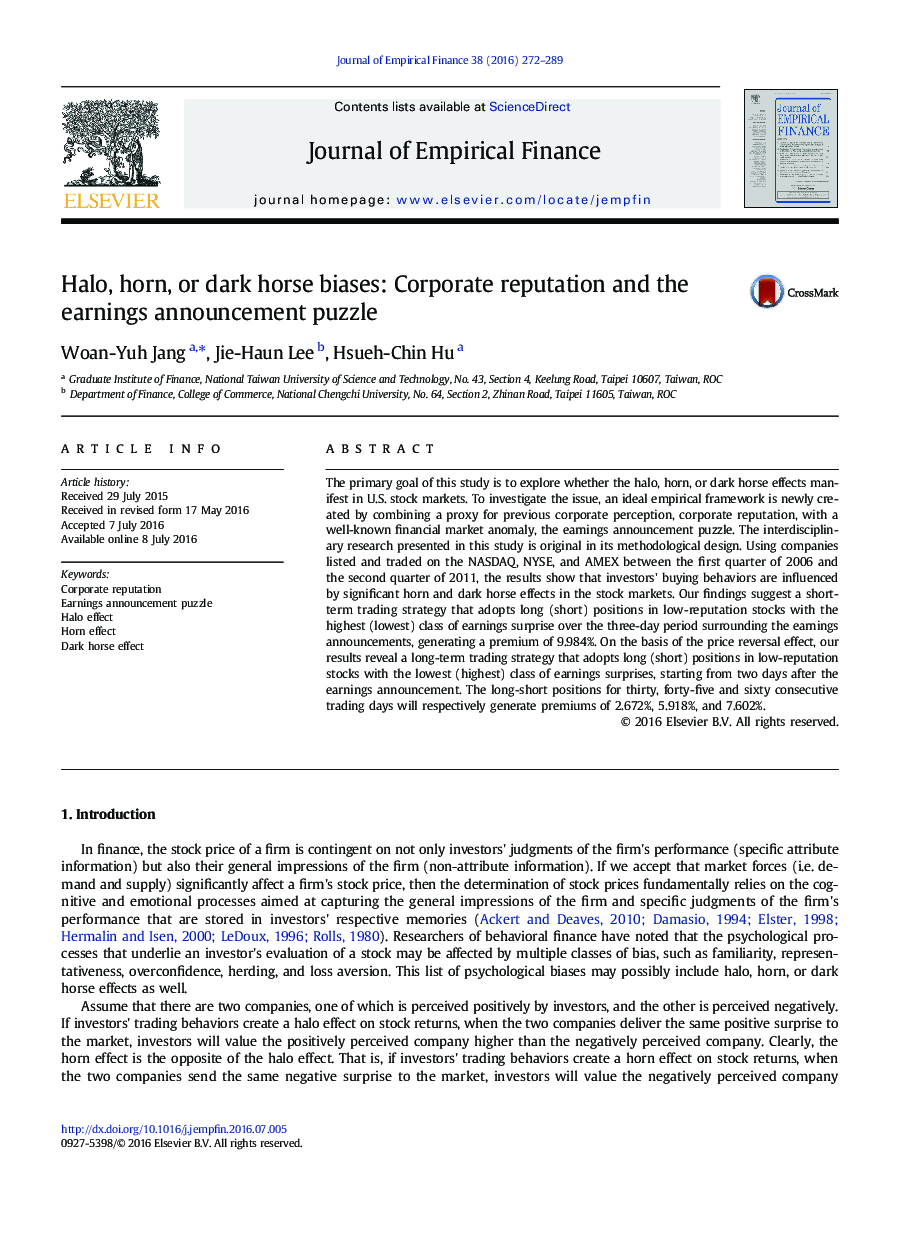| Article ID | Journal | Published Year | Pages | File Type |
|---|---|---|---|---|
| 958635 | Journal of Empirical Finance | 2016 | 18 Pages |
•An empirical framework for testing halo, horn, or dark horse biases is created.•High ratio of observations with positive SUE shows the analyst forecast bias.•A high (low) SUE of a stock induces a positive (negative) stock price response.•Investors' buying behaviors have dark horse and horn effects in the stock markets.•The positive and negative CARs after the earnings announcements reverse in a month.
The primary goal of this study is to explore whether the halo, horn, or dark horse effects manifest in U.S. stock markets. To investigate the issue, an ideal empirical framework is newly created by combining a proxy for previous corporate perception, corporate reputation, with a well-known financial market anomaly, the earnings announcement puzzle. The interdisciplinary research presented in this study is original in its methodological design. Using companies listed and traded on the NASDAQ, NYSE, and AMEX between the first quarter of 2006 and the second quarter of 2011, the results show that investors' buying behaviors are influenced by significant horn and dark horse effects in the stock markets. Our findings suggest a short-term trading strategy that adopts long (short) positions in low-reputation stocks with the highest (lowest) class of earnings surprise over the three-day period surrounding the earnings announcements, generating a premium of 9.984%. On the basis of the price reversal effect, our results reveal a long-term trading strategy that adopts long (short) positions in low-reputation stocks with the lowest (highest) class of earnings surprises, starting from two days after the earnings announcement. The long-short positions for thirty, forty-five and sixty consecutive trading days will respectively generate premiums of 2.672%, 5.918%, and 7.602%.
